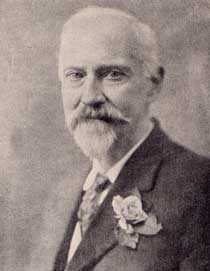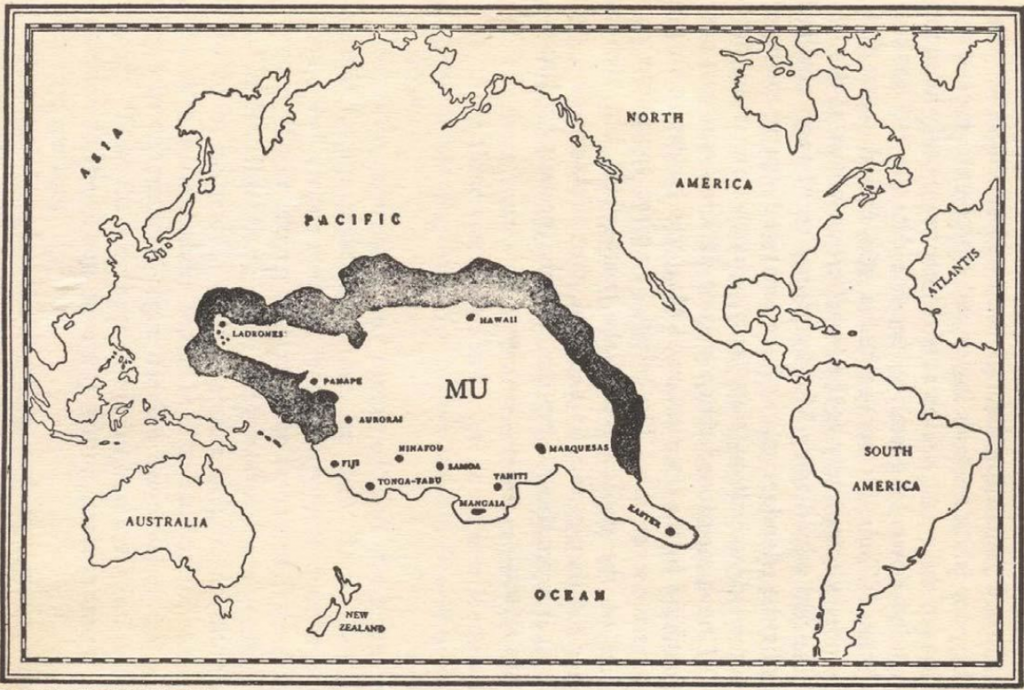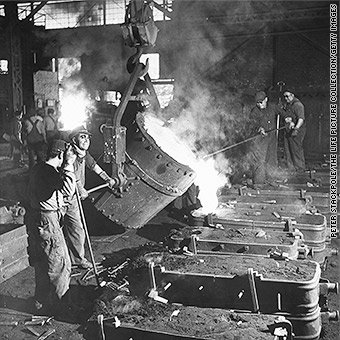
Griffith, Percy Tate. The Original My Friend Churchey and His Sunken Island of Mu. Published by Jack E. Churchward (2023). $20.00
My Friend Churchey is a biography originally written in 1937 by Percy Tate Griffith, who could easily be described as James Churchward’s best friend. He wrote it the year after Churchward’s death at age 85. Many readers of my blog probably recognize James Churchward as the man behind stories of Mu, a fabled sunken continent of the ancient past.
Like Atlantis, Mu was supposed to be destroyed in a cataclysm but not before its inhabitants escaped destruction as refugees to the rest of the world. A world that was far more primitive in art, technology, and architecture than the land of Mu. Or so Churchward claimed.
But this isn’t an aspect of his biography we learn much about at the beginning of Griffith’s biography. In fact, this isn’t even the person he introduces us to. Instead, the reader is introduced to an enigmatic adult named Churchey who, of wonderful character, charm, intellect, and natural curiosity of the world, befriends a much younger teenager.
That teenager, of course, is our narrator, Percy. Or Perc, as he is referred to in the book.
The book itself is mostly in Percy’s own words. In fact, Jack Churchward, Churchey’s great-grandson, put the work together and ensured that the very pages of Percy’s manuscript were copied–accidental inkblots or coffee stains, corrections, revisions, and all. One might be tempted to think this was simply a shortcut rather than submit as an edited and revised version, but I think one would be wrong. By reading it as Percy wrote it and later made corrections and revisions, an astute reader will more accurately understand the author’s intent.
In addition to this unusual editorial characteristic, Jack Churchward prefaces Percy’s words with a half-dozen pages that provide valuable context and insight that perhaps even Percy Griffith was ignorant of, and some reasoning behind the decision to wait so long to share this with the world.
Another half-dozen pages or so are provided to Dr. John Hoopes, professor of anthropology at the University of Kansas and an archaeologist trained at both Yale and Harvard. In this Forward, Hoopes gives a broader context to the story of James Churchward and how he fits in with other early antiquarians and speculators of archaeological conjectures. Hoopes elegantly weaves Churchward’s Mu into the pseudoarchaeological milieu as it originated with figures like Helena Blavatsky (1831-1891) of the Theosophical Society and Ignatius Donnelly (1831-1901) through to Graham Hancock and cable television’s Ancient Aliens, both of modern times.
The character we meet through Percy is a “soldier, scholar, student, thinker, explorer, artist, inventor, engineer, metallurgist, expert angler, [and] Mason!” Percy is but a mere boy when Churchey is introduced, but it quickly becomes apparent that Percy has a mental acuity that puts him ahead of his peers as he finds himself doing the work of a self-employed patent attorney at age 16! At this time, his friend Churchey is at least 41 and an inventor at a time when industrialization was advancing from the Victorian era into the early 20th century. Among Churchey’s inventions was an extremely hardened steel that included nickel, chrome, and vanadium (N.C.V. steel).
The American military wanted that steel since it was seemingly impervious to bullets. And steel manufacturers wanted to provide it. But they didn’t want to pay an outsider, a non-steel inventor, for the rights to produce it. Much of the biography is about Churchey’s struggle with Big Steel and keeping his patents. And let me tell you this is the story I was riveted to. Percy Griffith’s anecdotes throughout make this well worth reading if you have a passing interest in the history of industrialization, steel manufacture, early inventors, or even courtroom drama!
My Friend Churchey and His Sunken Island of Mu was an absolute delight to read. I recommend reading it as laid out, but after finishing, go back and read the forward and preface again. I found this helped reinforce some context and made the entire story extremely satisfying.



Leave a Reply
You must be logged in to post a comment.